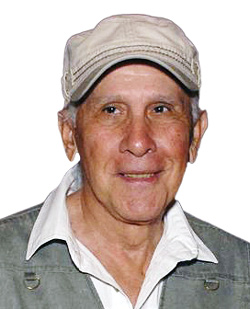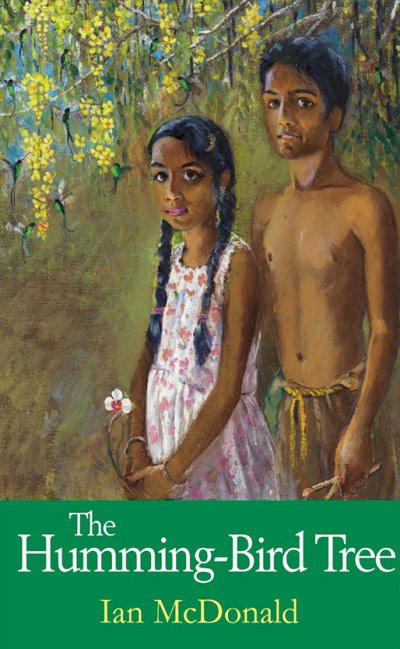February 20, 2019 issue
Authors' & Writers' Corner

Depending on which part of the world you live in, February can be rainy or dry. February is the surname of a number of folks. There is also reportedly a community in the United States called February. It is the only month of the year that can pass without a full moon. It has 28 days and 29 days in a leap year, once every four years. Those folks born in a leap year on the 29th of February have to wait four years to celebrate their birthday. That does not sound like much fun to me. February is one of the most mispelled words in the English language – often spelt Febuary, and even harder to pronounce.

There is also Black History month which is celebrated in February. Some say because of the birth of Abraham Lincoln, February 12 and Frederick Douglass, February 14. Douglass was an American slave who escaped and became a civil rights leader in the 19th century in the United States. I see February as perhaps being the hump we all want to get over in terms of winter. Better days are coming. Spring can’t come too soon for me. I already took a spill on the ice stepping out my backdoor this February.
February’s birthstone is amethyst symbolizing healing powers and spiritual wisdom. For me February is Carnival in Trinidad and Mardi Gras in New Orleans, the days leading up to Ash Wednesday. The superstition and symbolism of February linger on.
February is remembered by some tragic events, such as the St. Valentine’s Day massacre in 1928 in Chicago by Al Capone men disguised as policemen killing members of a rival mafia gang.
Guyana had its Black Friday fires – February 23, 1945, the week after my birth, when Water Street businesses, the Assembly Rooms, the Museum and other places in Georgetown were destroyed by fire. A big flood also hit Georgetown the following week. Friday February 16, 1962, riots, looting and civil disturbances erupted in British Guiana. British troops were called in to quell the disturbances. I saw some of it from our home on Parade Street in Georgetown. A mass exodus of Guyanese followed.
February 21, 1763 was a slave rebellion in Berbice. February 9, 1838, the colony was divided into three counties, Demerara, Essequibo, and Berbice. February 18, 1856, the Georgetown riots broke out in which properties of the Portuguese were destroyed.
Lord Kitchener, one of my favourite calypsonians, in his calypso January Girls sang, “February girls are hard to please, they like to have their men bowing to their knees”. I don’t think that is true. I have to stand up for my birth month.
The squirrels in our yard seemed to have given birth and the young ones are chasing each other around on the ice, seemingly oblivious of the weather. The jackass (donkey) at the farm behind us has the sense to stop braying and waking us up. Yuh t’ink it easy. If the creeks don’t rise and the sun still shines I’ll be talking to you.
‘Humming-Bird Tree’

By Romeo Kaseram
Ian McDonald was born on April 18, 1933, in St Augustine, Trinidad to father John Archie, originally from St Kitts, and mother Thelma (née Seheult). His father was employed as the Agricultural Director of Gordon Grant Limited, while his uncle was Air Marshall Sir Arthur McDonald of the Royal Air Force. McDonald siblings are four sisters, and a brother. His early education was between 1942-1951 at the prestigious Queen’s Royal College. Here he excelled at academic work, earning distinctions in History and English in the Higher School Certificate. From 1951-1955, McDonald attended Clare College, Cambridge University, where he studied for a BA Honours Degree in History, and studied for the Master of Arts following his undergraduate achievement.
McDonald returned to the Caribbean in 1955, not to Trinidad, but to what was then British Guiana to work with the Booker Group of Companies. Since then he lived and worked in what later became independent Guyana. It was a long career spent in the sugar industry, first working as Secretary of the Bookers BG Group Committee; later, he moved on to become Company Secretary of Bookers Sugar Estates, and rose to become its Administrative Director. Staying on after Bookers was nationalised in 1976, McDonald continued with what later became the Guyana Sugar Corporation, working in the post of Director of Marketing and Administration from 1976 to 1999. According the Wikipedia, McDonald’s “knowledge of regional and international sugar marketing in particular was built up over 52 years” and saw him representing Guyana and Caricom at international conferences and forums. In 2000, McDonald was appointed to the position of Chief Executive Officer of the Sugar Association of the Caribbean; he retired in 2007, after over five decades of service in the sugar industry.
Wikipedia notes McDonald showed an early “love for literature and writing”, which “began when he was a schoolboy”. Writing in the Trinidad Guardian, academic and university lecturer, Kenneth Ramchand, notes that his early “poems like Jaffo the Calypsonian, 'e Four Knives of Freeman the Cane-Cutter, and The Seine-Pullers are steeped in the popular culture of Trinidad”. It appears “literature and writing” have been part of McDonald’s family history, with Ramchand noting the “great-grandfather translated Ovid and wrote poems including Childe Harold in the Shades, his great-uncle published Songs of an Islander, and his grand-mother launched Sunflakes and Stardust, and corresponded with two great West Indian editors and poets, AJ Seymour (Kyk-over-Al) and Frank Collymore (Bim)”. Wikipedia notes McDonald’s early works were published in the 1950s, adding that over the years poems appeared in West Indian journals such as Bim, Kyk-Over-Al, The Caribbean Writer, New Voices, The Trinidad And Tobago Review, Poui, The Caribbean Review of Books, and Jamaica Journal, among other publications. Peepal Tree tells us McDonald also wrote a play, Tramping Man which was performed in Guyana in 1969, broadcast by GBS in 1972, and published in Errol Hill’s A Time and a Season.
However, it is arguable that McDonald’s most outstanding work is The Humming-Bird Tree. In an article in the Caribbean Beat, its author Nicholas Laughlin tells us McDonald’s “high-flying job – and his tennis-champ career – left little time for writing”. However, one day while sorting through his papers, McDonald came across the manuscript of this novel. Says McDonald: “I almost didn’t remember writing it. I read it with eyes that were ten years older, and I said to myself, some of this is quite good.” One of McDonald’s colleagues at Bookers sent the manuscript to a literary agent friend in London. Adds McDonald: “Literally within two weeks I had a letter saying he loved the book.”
The publisher Heinemann took the manuscript, changing the title to The Humming-Bird Tree. Peepal Tree notes the novel was published in 1969 “to great acclaim”. It adds: [The Humming-Bird Tree] has been in almost continuous print ever since, and… made into a BBC film. It deals with the involvement of a young white child on a sugar estate with two Indian children from the village. It is written with great integrity and ends with the shamed movement away of the white child, still in his parents' orbit, a path which McDonald’s own life and writings reversed.” Ramchand tells us The Humming-Bird Tree is a “novel of childhood [which] is at once a loving celebration of the landscape of his native island, an evocation of life and society in Trinidad from the 1930s to the 1950s, and a sad confessional depiction of how social and ethnic bias are implicated in the loss of innocence and harmony”.
Peepal Tree tells us McDonald was “[born] into a white West Indian family of power and privilege” and yet he “led a very different life”. However, it adds what is striking and notable was McDonald’s commitment and dedication to his role in Guyana’s sugar industry, a “post he maintained with the utmost technocratic skill and humanity throughout the darkest days of PNC party paramountcy, presidential dictatorship and economic collapse”. In addition to this commitment, “Throughout these years and into the difficult years of reconstruction of the 1990s, McDonald contributed in incalculable ways to the survival of culture and human values in Guyana.”
On the literary side, Ramchand notes McDonald’s commitment to the arts, telling us “[he] became an important part of the Guyanese literary scene as poet, short-story writer, newspaper columnist, editor of Kyk-over-Al, and as chairman of Guyana Publishers Inc, publishers of the Stabroek News”. McDonald also co-edited the Collected Poems of AJ Seymour, the Heinemann Book of Caribbean Poetry in English, The Bowling Was Superfine (WI cricket writing), and They Came in Ships (an anthology of Guyanese East Indian writing). Says Ramchand: “Guyana claims him and has honoured him, and Trinidad and Tobago owns him too. But he is a Caribbean man boasting strong family connections with Antigua, Montserrat and Jamaica.”
McDonald has received many awards, including being a Fellow of the Royal Society of Literature since 1970. He received the Guyana National Honour, Golden Arrow of Achievement in 1986; and an Honorary Degree of Doctor of Letters (DLitt) from the University of the West Indies in 1997 in recognition of his services to Caribbean sugar, sport, and literature. In 2003, he received the Wordsworth McAndrew Award 2004 from the Guyana Cultural Association, New York, and was inducted in 2004 into the Queen’s Royal College Hall of Honour. In 2014 he was honoured by the Friends of Mr Biswas, an NGO in Trinidad dedicated to the preservation and development of the Naipaul House Literary Museum on Nepaul Street in St James, Trinidad.
Sources for this exploration: Wikipedia; Trinidad Guardian; Peepal Tree Press; Caribbean Beat Magazine: https://www.caribbean-beat.com/issue-96/ian-mcdonald-evening-garden#ixzz5fpUgiW00.